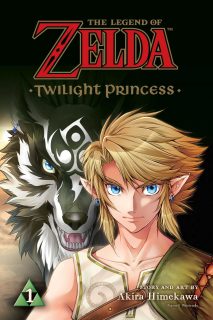 Creator: Akira Himekawa
Creator: Akira Himekawa
Translator: John Werry
U.S. publisher: Viz Media
ISBN: 9781421593470
Released: March 2017
Original run: 2016
Akira Himekawa is the joint pen name of A. Honda and S. Nagano, two women who have been collaborators for over thirty years. The two-person creative team is probably best known for their work on the manga adaptations of The Legend of Zelda series of video games, although some North American readers may associate Himekawa with the Avatar: The Last Airbender comics as well. Despite being a fan of both franchises, I actually hadn’t made a point to read any of Himekawa’s work until after meeting the two women briefly at the Toronto Comic Arts Festival in 2014. Twilight Princess is the most recent entry in Himekawa’s series of The Legend of Zelda adaptations. Initially Twilight Princess was intended to be a children’s series, but when the original 2006 video game it was to be based on became the first in the franchise to be rated for teens, plans for that manga were cancelled. It wasn’t until 2016 that Himekawa would begin serializing Twilight Princess digitally, the first volume subsequently being released in Japan in print later that year. Viz Media’s English-language edition of Twilight Princess debuted in print in 2017.
Link is a young man trying to outrun his past. A year and a half ago he wandered into the border village of Ordon, hiding his personal history in hopes of establishing a new life for himself. Ordon is idyllic, seemingly a perfect place for Link to retreat. The land is said to have been blessed by the spirits and the village is well-known for its bountiful harvests. Although Link arrived as a stranger, he was warmly welcomed by the villagers and has since become an integral part of the community. Link loves Ordon and its people, but there’s always a small part of him that feels like he doesn’t quite belong. He is still plagued by guilt over the tragedies of his past, dealing with a weighty feeling of responsibility which is impossible to ignore. Having experienced disaster before, Link may be one of the few who can prevent it from happening again. Most of the other people in the sacred kingdom of Hyrule are unaware of the looming threat that the long-forgotten Twilight Realm poses. It’s a danger that grows even greater when the ambitions of one man to rule both the light and the dark begin to come to fruition. As the shadows of darkness gather around Ordon, Link will have to face his past and his fears, confronting the possibility that he will once again lose everything that he holds most dear.
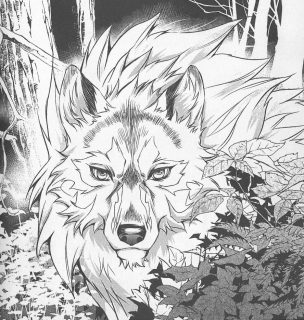 Although I’ve played some of the original Twilight Princess, familiarity with the video game is not at all necessary to enjoy Himekawa’s adaptation. At least so far, the series can stand on its own as a work–the manga largely comes across as a freely-developed fantasy rather than a strict reimagining of a video game. Himekawa’s narrative in Twilight Princess is streamlined and quickly paced, incorporating elements of the original game in clever ways. Some of the wonder of having a world to leisurely explore and discover is lost as Twilight Princess is adapted into a different medium, but in exchange the manga emphasizes depth of characterization. As the protagonist, Link is generally the most fully-realized character. I really like Himkeawa’s multi-faceted interpretation of Link in Twilight Princess. While at heart Link is a troubled and brooding hero, he also exhibits happiness and joy and there are moments in the manga when his good-natured goofiness shines through. The Twilight Princess manga, much like the video game itself, is intended for a more mature audience than many of the previous incarnations of The Legend of Zelda. The story tends to be fairly dark and can be strikingly violent at times.
Although I’ve played some of the original Twilight Princess, familiarity with the video game is not at all necessary to enjoy Himekawa’s adaptation. At least so far, the series can stand on its own as a work–the manga largely comes across as a freely-developed fantasy rather than a strict reimagining of a video game. Himekawa’s narrative in Twilight Princess is streamlined and quickly paced, incorporating elements of the original game in clever ways. Some of the wonder of having a world to leisurely explore and discover is lost as Twilight Princess is adapted into a different medium, but in exchange the manga emphasizes depth of characterization. As the protagonist, Link is generally the most fully-realized character. I really like Himkeawa’s multi-faceted interpretation of Link in Twilight Princess. While at heart Link is a troubled and brooding hero, he also exhibits happiness and joy and there are moments in the manga when his good-natured goofiness shines through. The Twilight Princess manga, much like the video game itself, is intended for a more mature audience than many of the previous incarnations of The Legend of Zelda. The story tends to be fairly dark and can be strikingly violent at times.
One of the things that I appreciate the most about Himekawa’s work on The Legend of Zelda manga is the creators’ ability to adjust their tone and style to fit the requirements of a given series. Himekawa’s skill and flexibility as artists can be seen as they move from one adaptation to the next, but can also be exhibited within a single manga. In Twilight Princess specifically there is a wonderful contrast between the serene, pastoral setting of Ordon and the ominous darkness and shadowy creatures encroaching upon it. The artwork in Twilight Princess is beautifully executed, ranging from the gorgeous to the grotesque as demanded by the story. In comparison, the storytelling itself isn’t nearly as strong. The first chapter of Twilight Princess in particular suffers from some awkward exposition and Link has a tendency to ask questions that he should already know the answers to having lived in Ordon for so long. Still, I do like the story, characters, and settings of Twilight Princess. In the past, Himekawa’s The Legend of Zelda manga have only been one or two volumes long. I would be surprised if Twilight Princess could end satisfactorily in such a short span, so I hope that the series will be longer to allow the story to unfold more naturally; I enjoyed the first volume of Twilight Princess a great deal and look forward to reading more.
Thank you to Viz Media for providing a copy of The Legend of Zelda: Twilight Princess, Volume 1 for review.

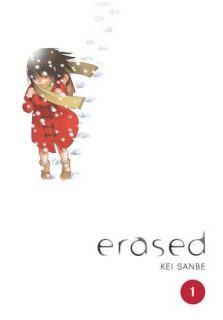

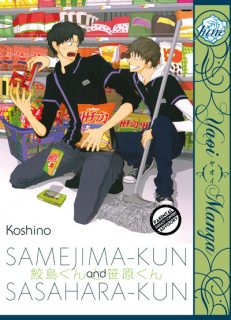



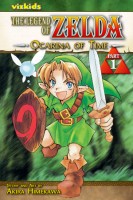
 K-20: The Fiend with Twenty Faces directed by Shimako Satō. K-20 is a live-action film based on the novels of Soh Kitamura (which sadly haven’t been translated into English) which were in turn inspired by the works and characters of Edogawa Rampo, specifically his famous detective Akechi Kogorō and his nemesis “Twenty Faces.” Akechi’s young assistant Kobayashi also has a role to play. It was because of this Rampo connection that I decided to watch the film in the first place, but even those unfamiliar with the references will be able to enjoy the movie. Packed with action and stunts, a little bit of romance, a great cast, and a large dose of humor, K-20 was extremely entertaining. The film is set in the late 1940s in an alternate history in which the Second World War was never fought but in which a strict hierarchical class structure is enforced. The story follows Endo Heikichi, an acrobat who is arrested for being the master thief K-20 after being set up, and his attempts to prove his innocence, basically by becoming as skilled as K-20 himself.
K-20: The Fiend with Twenty Faces directed by Shimako Satō. K-20 is a live-action film based on the novels of Soh Kitamura (which sadly haven’t been translated into English) which were in turn inspired by the works and characters of Edogawa Rampo, specifically his famous detective Akechi Kogorō and his nemesis “Twenty Faces.” Akechi’s young assistant Kobayashi also has a role to play. It was because of this Rampo connection that I decided to watch the film in the first place, but even those unfamiliar with the references will be able to enjoy the movie. Packed with action and stunts, a little bit of romance, a great cast, and a large dose of humor, K-20 was extremely entertaining. The film is set in the late 1940s in an alternate history in which the Second World War was never fought but in which a strict hierarchical class structure is enforced. The story follows Endo Heikichi, an acrobat who is arrested for being the master thief K-20 after being set up, and his attempts to prove his innocence, basically by becoming as skilled as K-20 himself.